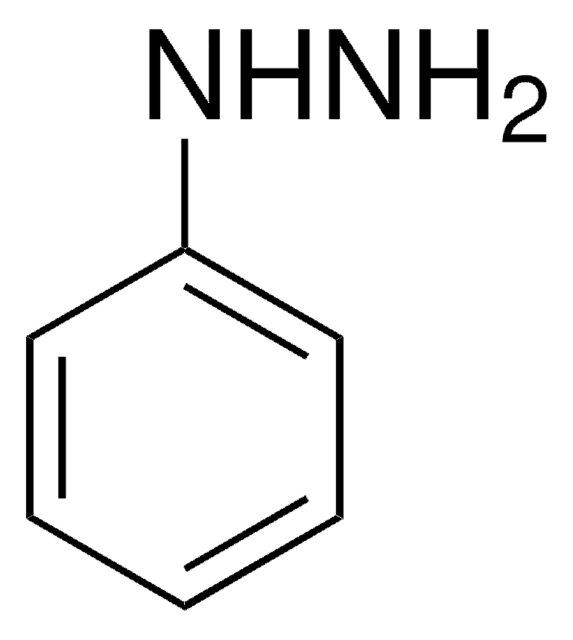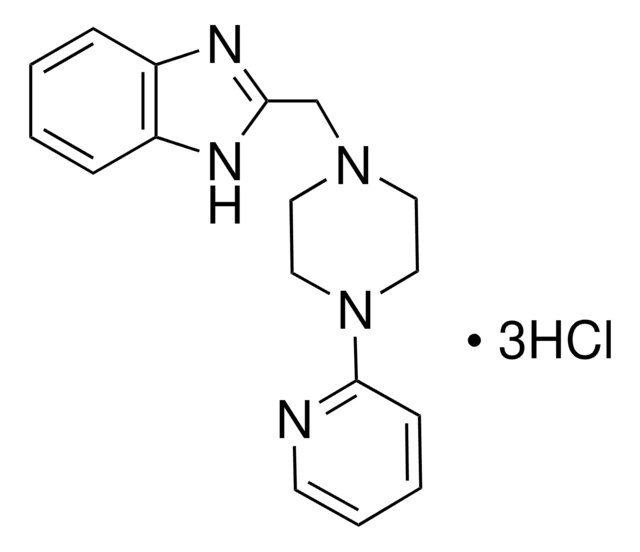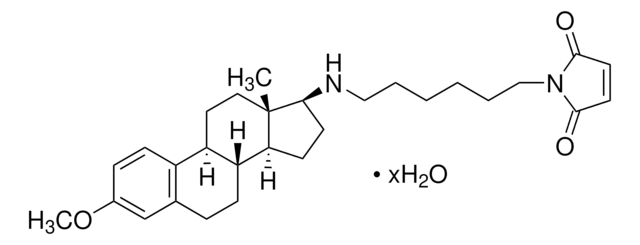SAE0066
Adenylyl Cyclase Toxin from Bordetella pertussis
Autenticatiper visualizzare i prezzi riservati alla tua organizzazione & contrattuali
About This Item
Codice UNSPSC:
12352200
NACRES:
NA.26
Prodotti consigliati
Origine biologica
Bordetella pertussis Tohama I
Livello qualitativo
Saggio
≥70%
Forma fisica
liquid
Attività specifica
≥ 50 units/mg protein
tecniche
cell culture | mammalian: suitable
Compatibilità
suitable for molecular biology
applicazioni
detection
Temperatura di conservazione
−20°C
Informazioni sul gene
Bordetella pertussis Tohama I ... CyaA(69600712)
Descrizione generale
Research area: IMMUNO AND CKS
Adenylate Cyclase Toxin (ACT or CyaA) is a member of the extensive family of toxins known as Repeat in Toxin (RTX), which are produced by Gram-negative organisms. ACT is encoded by the cyaA gene and secreted extracellularly in the form of a soluble protein. It exhibits both adenylate cyclase enzymatic activity and hemolytic activity. The synthesis, maturation, and secretion of ACT are regulated by the CyaCABD operon. Moreover, its specific cellular receptor, CD11b/CD18 integrin (αMβ2, Mac-1, or CR3), is expressed on myeloid phagocytes.
Adenylate Cyclase Toxin (ACT or CyaA) is a member of the extensive family of toxins known as Repeat in Toxin (RTX), which are produced by Gram-negative organisms. ACT is encoded by the cyaA gene and secreted extracellularly in the form of a soluble protein. It exhibits both adenylate cyclase enzymatic activity and hemolytic activity. The synthesis, maturation, and secretion of ACT are regulated by the CyaCABD operon. Moreover, its specific cellular receptor, CD11b/CD18 integrin (αMβ2, Mac-1, or CR3), is expressed on myeloid phagocytes.
Applicazioni
Adenylyl Cyclase Toxin from Bordetella pertussis has been used as Gα(i/o) inhibitor to study the involvement of the sphingosine 1-phosphate receptor 2/Gα(12/13)/MAPK signaling pathway in the priming and activation of NLRP3 inflammasome during cholestatic liver injury.
Azioni biochim/fisiol
Adenylate Cyclase Toxin (CyaA) is responsible for inhibiting the phagocytic activities of neutrophils and macrophages by impairing oxidative response and chemotaxis, ultimately leading to cell apoptosis or necrosis. Additionally, ACT can upregulate the expression of MHC class II and costimulatory molecules on dendritic cells, thereby reducing proinflammatory cytokine production.
Codice della classe di stoccaggio
10 - Combustible liquids
Classe di pericolosità dell'acqua (WGK)
WGK 3
Punto d’infiammabilità (°F)
Not applicable
Punto d’infiammabilità (°C)
Not applicable
Certificati d'analisi (COA)
Cerca il Certificati d'analisi (COA) digitando il numero di lotto/batch corrispondente. I numeri di lotto o di batch sono stampati sull'etichetta dei prodotti dopo la parola ‘Lotto’ o ‘Batch’.
Possiedi già questo prodotto?
I documenti relativi ai prodotti acquistati recentemente sono disponibili nell’Archivio dei documenti.
I clienti hanno visto anche
Lei Hou et al.
Journal of molecular medicine (Berlin, Germany), 99(2), 273-288 (2021-01-04)
NLRP3 inflammasome-driven inflammation represents a key trigger for hepatic fibrogenesis during cholestatic liver injury. However, whether sphingosine 1-phosphate (S1P) plays a role in NLRP3 inflammasome priming and activation remains unknown. Here, we found that the expression of NLRP3 in macrophages
Yao Wei et al.
Nature communications, 11(1), 941-941 (2020-02-20)
Oxidative stress is a major pathogenic mechanism in Parkinson's disease (PD). As an important cellular antioxidant, glutathione (GSH) balances the production and incorporation of free radicals to protect neurons from oxidative damage. GSH level is decreased in the brains of
Il team dei nostri ricercatori vanta grande esperienza in tutte le aree della ricerca quali Life Science, scienza dei materiali, sintesi chimica, cromatografia, discipline analitiche, ecc..
Contatta l'Assistenza Tecnica.










